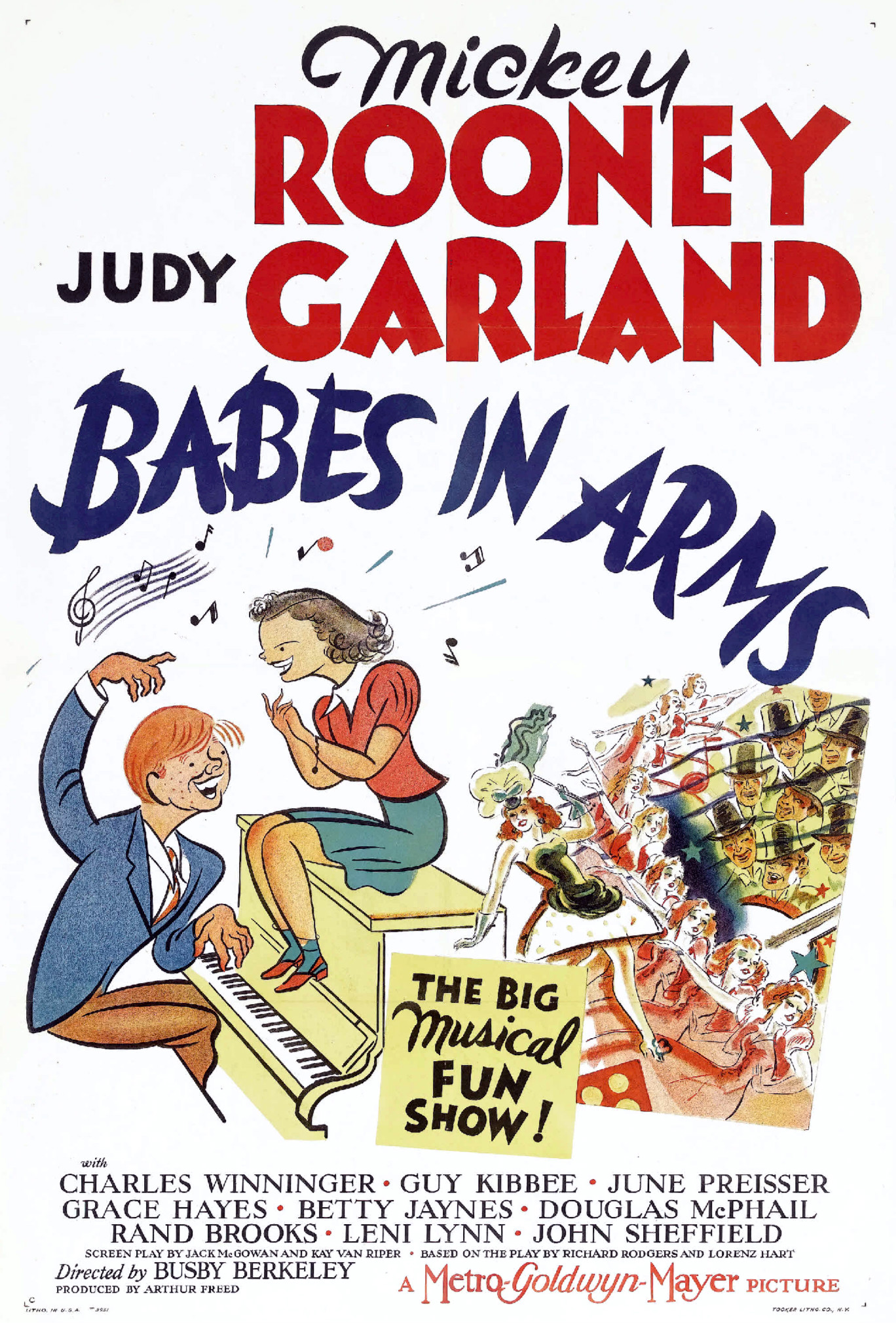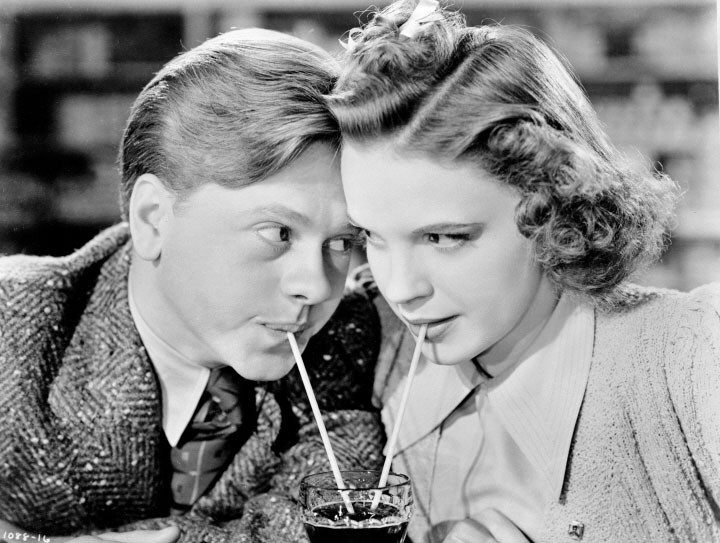 by Camila Henriques
by Camila Henriques
As we continue our centennial tribute to Mickey Rooney, it’s time to talk Babes in Arms. For a long time the 1939 musical was remembered mostly because of the pairing of Rooney and real life BFF Judy Garland, but the conversation has shifted to a necessary bumpier road, since the movie is just one of many examples of that era to feature performances in blackface (including the two leads).
The film’s place in Mickey’s career is not to be diminished: he received an Oscar nom for Best Actor at the age of 19 (the second youngest ever nominated) . The year before he had been awarded a Juvenile Oscar (Judy won the same honor the following year, as she had this hit and that other 1939 film).

A vaudevillian kid just like his co-star, Rooney was already a veteran when Babes… came around, with his Andy Hardy journey already begun...
He has a captivating screen presence, and the fact that the character is also named Mickey just makes it easier for us to feel drawn to him. His talent for physical comedy in the scene he directs other actors and has to play different characters within seconds is pure genius. Mickey was a very mature actor at that age, and it didn’t hurt to have him alongside one of the greatest performers in film history, who was already so captivating at 16. It all boils down to chemistry.
There are a few pairings throughout movie history that are irresistible, and Mickey Rooney and Judy Garland certainly belong to that list. From their first appearance here, singing that “Good Mornin’” (a tune that, years later, would find a place in cinephiles hearts thanks to Gene Kelly, Debbie Reynolds and Donald O’Connor in Singing in The Rain’, a film that has a few other connections to this one) to their most dramatics moments as a couple, Mickey’s Mickey and Judy’s Patsy are just too loveable.
But, as the film progresses, it fails to keep up with the energy of the rehearsal and protesting scenes. It also features a sequence that just should not exist: a group of white actors in blackface singing “Oh, Susanna”. Among them, Mickey and Judy. It wasn’t the first time the actress did this and, while it’s important to hold everyone involved in a decision like this accountable, we all know how Judy was controlled by the studio system. But, as another 1939 film, Gone With The Wind, is in the center of discussion because of its racist undertones and the problematic tropes for black actresses it helped perpetuate, it’s a hurdle to get through a viewing of Babes in Arms without questioning this practice of not just the studio system but the vaudevillian acts that this film (and many other early musicals) pays tribute to.
In the end, Babes in Arms is one of those problematic views. It has one of cinema’s best duos bantering like they’re seasoned pros (as they were at that point), and, at the same it’s the testament of a past that Hollywood should be ashamed of. (If you’re interested in a Arthur Freed-produced film about the arrival of talkies with that ‘Good Mornin’’ song in the soundtrack, there’s always Singin’ in The Rain)
Previously: Mickey's two earliest franchises